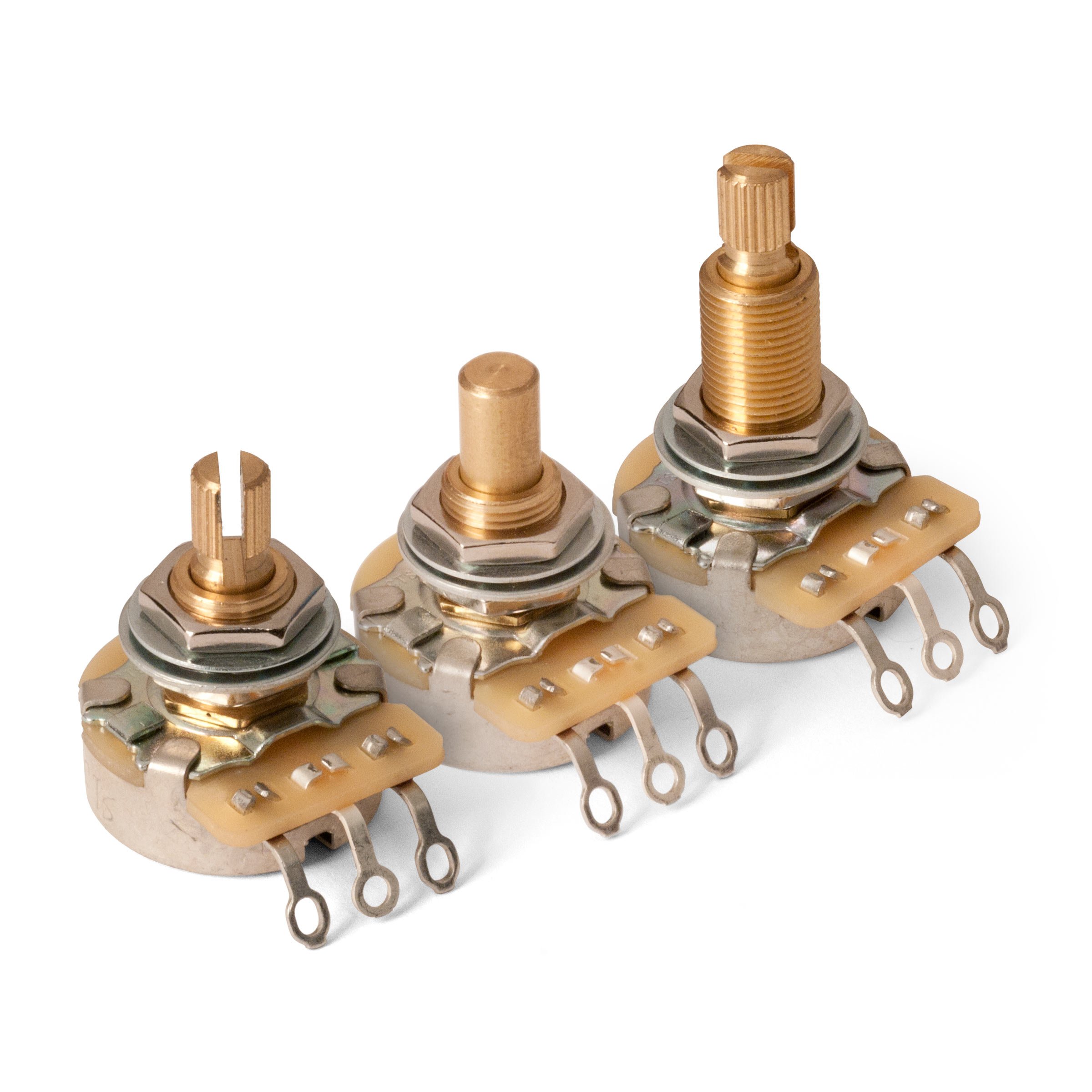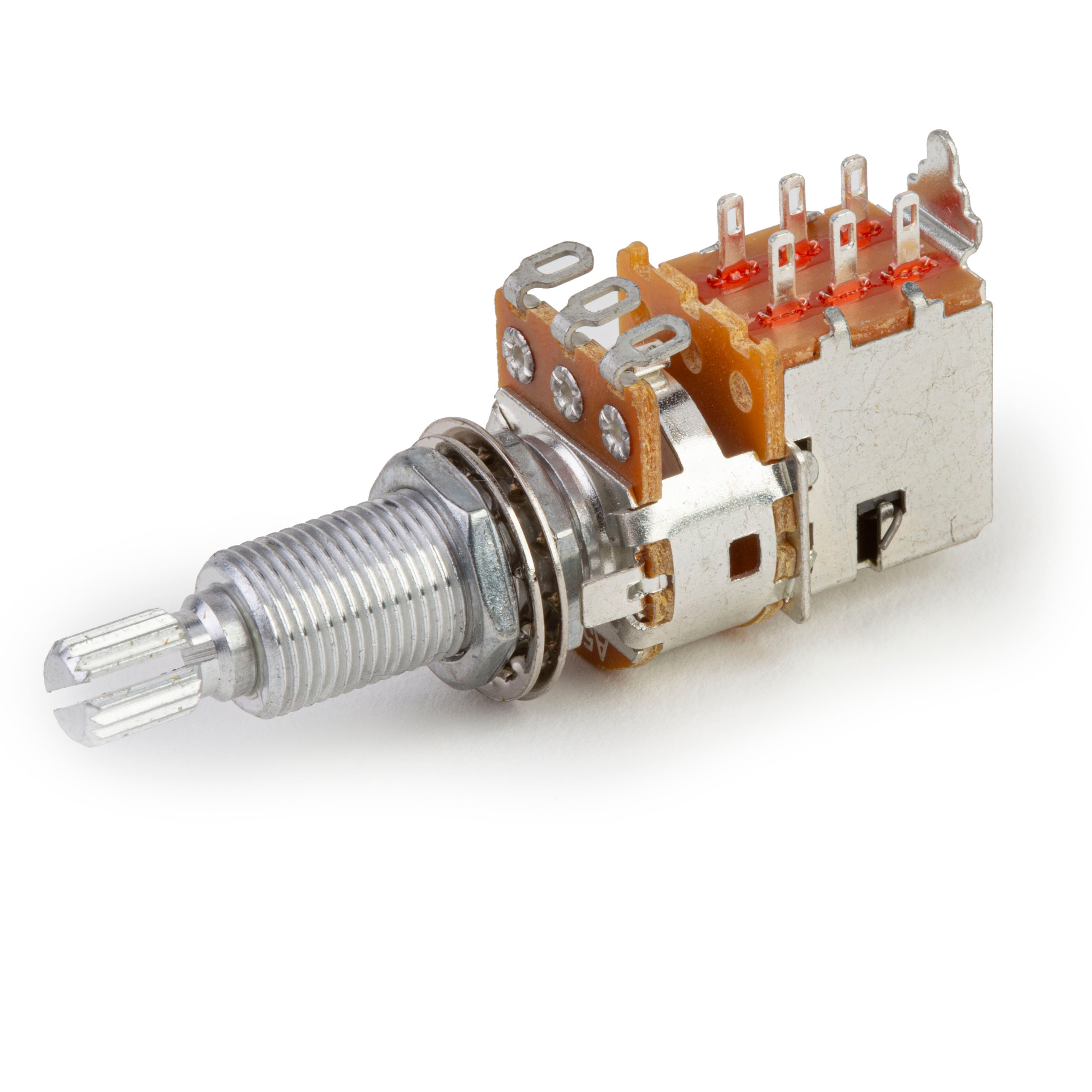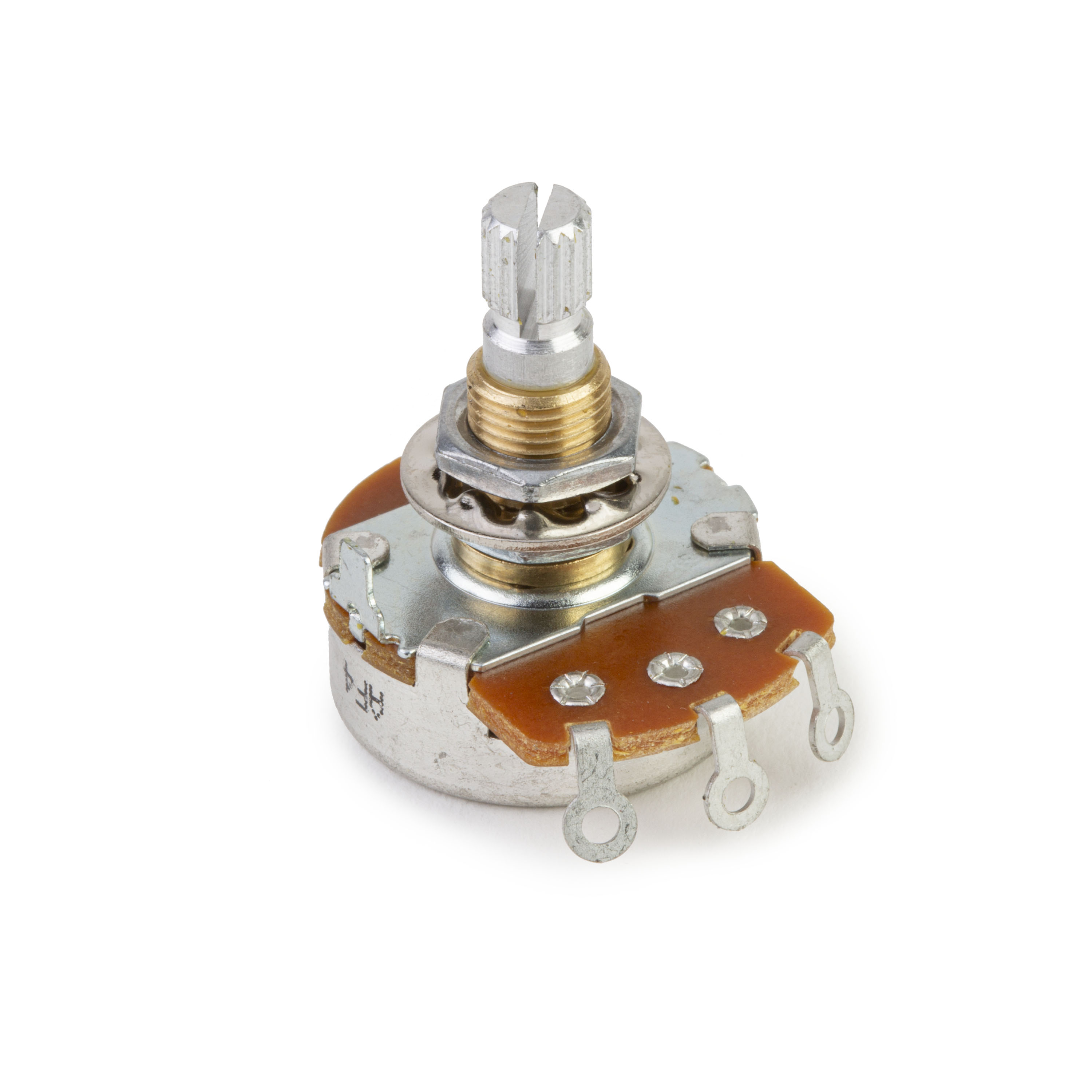Understanding Guitar Wiring, Part 2: What is a potentiometer, how does it work?
What is a potentiometer and how does it work?
A potentiometer, or pot, is a variable resistor. This means as the knob shaft is rotated, the DC resistance will change. A pot is very simple by design, and once we review the components and their purpose they should be less mysterious. First, there are three lugs or soldering terminals on a conventional potentiometer (see diagram #2). The outside two are the ends of the resistive strip, and the center lug is connected to the "sweeper." The sweeper allows you to vary the DC resistance relative to its position along the resistive strip, or relative to the outer two lugs. If you connect to only the two outside lugs, you will have a resistor of the pots value —25K, 250K, 300K, 500K, and 1Meg are common guitar pots. This is how you can determine a pot's value.
Potentiometers come in two varieties, linear-taper and audio-taper. The easiest way to see the difference between the pots is to diagram their tapers (see diagram #3). You'll see that the linear-taper pot's taper works at a 1:1 ratio. Audio taper, has a special logarithmic ratio. Guitars usually use audio taper, because our ears don't hear changes in volume in a linear fashion as you might expect. As the volume increases, a greater change in signal or sound-pressure is required to perceive a smooth transition. Using a guitar's control knob settings as an example, the actual change in volume between 2 and 3 is much less than the change between 7 and 8.
More in This Series
Part One: How a magnetic pickup works
Part Two: What is a potentiometer and how does it work?
Part Three: How is a volume pot wired?
Part Four: What is a capacitor and how does it work?
Part Five: Selector Switches
Part Six: Mini toggle switch basics and push-pull pot basics
Part Seven: Output Jacks
Part Eight: Grounding and Shielding
Part Nine: Understanding impedance and impedance matching
Part Ten: Wiring Glossary
Part Eleven: Sample Diagrams



